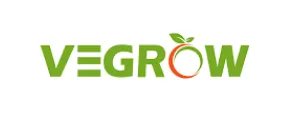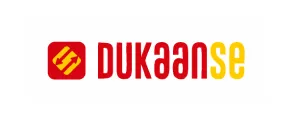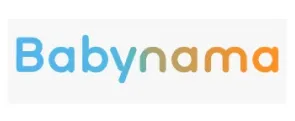In the evolving ways we live, we often use various chemicals and products at home without knowing their potential harm as they can be corrosive, explosive, flammable or toxic. These substances constitute hazardous waste and should be handled separately from regular wet and dry waste to avoid health risks and environmental damage. Effective management of hazardous waste is essential and it requires hazardous waste management authorisation from the state pollution control board.
What is Meant by the term Domestic Hazardous Waste?
Domestic Hazardous Waste is defined by the Solid Waste Management Rules of 2016. It includes various items such as discarded paint and pesticide cans, sanitary waste like disposable diapers and sanitary pads, biomedical waste like expired or unused medicines, broken mercury thermometers, used syringes, e-waste like tube lights, CFL bulbs, used batteries and button cells that are generated at the household level.
Another example of hazardous domestic waste comprises pesticides used for combating mosquitoes, cockroaches and rats, which are harmful to humans due to their poisonous nature. Fungicides and garden herbicides are also highly toxic, not only during use but also upon disposal. Broken glass represents another prevalent form of hazardous waste that poses a significant danger.
Importance of Hazardous Waste Management Rules
The Hazardous Waste Management Rules were established to ensure the safe handling, generation, processing, storage, treatment, transportation, reprocessing, collection and proper disposal of hazardous waste. Originating in 1989, these rules underwent subsequent amendments in 2000 and 2003. Furthermore, the Hazardous Waste (Management, Handling and Transboundary Movement) Rules were introduced in 2016.
These rules prioritise the responsibility of individuals engaged in various stages of hazardous waste management, including collection, storage, packing, transportation, processing, recycling, recovery, pre and co-processing, transfer or disposal of hazardous waste.
Specifically addressing domestic hazardous waste, it is regulated under the Solid Waste Management Rules. On the other hand, hazardous waste generated by industries and offices is addressed separately under the Hazardous Waste Rules of 2016. The classification also extends to certain biomedical waste categorised as domestic hazardous waste. However, waste generated by healthcare establishments is covered under the Biomedical Waste Management Rules of 2016. Additionally, e-waste management rules are applicable to electronic waste such as computers, TVs and fluorescent lamps. Lead acid batteries from home inverters and cars are managed in accordance with the Batteries (Management and Handling) Rules of 2001.
Authorities Granting Hazardous Waste Management Authorisation
Hazardous waste management authorisation is an important aspect of environmental protection and regulatory compliance. Various authorities play key roles in granting such hazardous waste management authorisation. These authorities include:
- Central Pollution Control Board:
The Central Pollution Control Board is a central regulatory body in India responsible for controlling and preventing pollution and plays a significant role in authorising hazardous waste management activities.
- State Pollution Control Board/Pollution Control Committee:
At the state level, State Pollution Control Boards or Pollution Control Committees are entrusted with the authority to grant hazardous waste management authorisation. They work in coordination with the CPCB to enforce environmental laws and regulations within their respective states.
- Directorate General of Foreign Trade (DGFT):
The Directorate General of Foreign Trade oversees the import and export of hazardous waste materials and ensures that such activities comply with international agreements and domestic regulations. Authorisation from DGFT is essential for cross-border movement of hazardous waste.
- Port Authority and Customs Authority:
Port authorities and customs authorities are important in the transportation of hazardous waste at the ports. They regulate the movement of hazardous waste across borders.
- Ministry of Environment, Forest and Climate Change:
MoEFCC is the top authority in India responsible for implementing policies related to environmental protection and climate change.
Who Requires Hazardous Waste Management Authorisation?
The following entities should seek hazardous waste management authorisation from the relevant regulatory bodies:
- Generators of Hazardous Waste:
Individuals or businesses that produce hazardous waste as a byproduct of their activities must obtain hazardous waste management authorisation. This includes industrial facilities, laboratories, manufacturing plants and other sources of hazardous waste generation.
- Collectors and Transporters:
Entities engaged in the collection, transportation and storage of hazardous waste should seek hazardous waste management authorisation to ensure compliance with regulations. These may include waste collection services, transport companies and storage facilities.
- Treatment and Processing Facilities:
Facilities involved in the treatment, processing, recycling and recovery of hazardous waste materials must obtain proper authorisation. These facilities play an important role in minimising the environmental impact of hazardous waste.
- Sellers and Traders:
Individuals or businesses offering hazardous waste for sale or transfer should obtain hazardous waste management authorisation to ensure that such transactions adhere to regulatory requirements and standards.
- Disposal Facilities:
Entities operating hazardous waste disposal sites or landfills must secure hazardous waste management authorisation to manage waste in an environmentally friendly and safe manner.
It is the responsibility of these authorised entities to:
- Safely manage hazardous waste to prevent harm to humans and the environment.
- Implement measures to avoid accidents and incidents related to hazardous waste.
- Provide protective equipment, training and safety measures to personnel working with hazardous waste materials.
Processes Generating Hazardous Waste
According to the Hazardous and Other Wastes (Management and Transboundary Movement) Rules, 2016, there are 38 specific processes from which hazardous waste is generated. Entities engaged in these processes must obtain Hazardous Waste Management Authorisation. The list of processes generating hazardous waste includes:
- Petrochemical processes and pyrolytic operations.
- Crude oil and natural gas production.
- Cleaning, maintenance of petroleum oil storage tanks, including ships.
- Petroleum refining or reprocessing of used oil or recycling of waste oil.
- Primary production for zinc, lead or copper and other such non ferrous metals except Aluminium.
- Secondary production or industrial use of zinc.
- Industrial operations with mineral or synthetic oil as the used lubricant in hydraulic systems or other applications.
- Secondary production of copper.
- Secondary production of lead.
- Production and industrial use with cadmium and arsenic and their compounds.
- Production of primary and secondary Aluminium.
- Metal surface treatment, such as etching, galvanising, cleaning, plating, etc.
- Production of iron & steel, including other ferrous alloys.
- Hardening of steel.
- Production of asbestos or asbestos-containing materials.
- Production of caustic soda and chlorine.
- Production of mineral acids.
- Production of nitrogenous and complex fertilisers.
- Production of phenol.
- Production and industrial use of solvents.
- Production and industrial use of paints, pigments, etc.
- Production of plastics.
- Production or industrial use of the glues, organic cement.
- Production of canvas and textiles.
- Industrial production & formulation of wood preservatives.
- Production, use of synthetic dyes, dye intermediates & pigments.
- Production of organic-silicone compounds.
- Production of drugs/pharmaceutical and healthcare products.
- Production & formulation of pesticides, including stockpiles.
- Leather tanneries.
- Electronic Industry.
- Pulp and Paper Industry.
- Handling of hazardous chemicals and wastes.
- De-contamination of containers used for hazardous wastes/chemicals.
- Purification or treatment of exhaust air/gases and wastewater from the processes in this schedule.
- Purification process for organic chemicals.
List of Processes Generating Hazardous Wastes:
|
S.No.
|
Processes
|
Hazardous Waste
|
|
1
|
Production of mineral acids
|
Process acidic residue, filter cake, dust
Spent catalyst
|
|
2
|
Production of nitrogenous and complex fertilisers
|
Spent catalyst
Carbon residue
Sludge or residue containing arsenic
Chromium sludge from the water cooling tower
|
|
3
|
Production of phenol
|
Residue or sludge containing phenol
Spent catalyst
|
|
4
|
Production & industrial use of the glues, organic cement, adhesive and resins
|
Wastes or residues (that is not made with vegetable, animal materials
Spent solvents
|
|
5
|
Production & industrial use of cadmium, arsenic and their compounds
|
Residues which contain cadmium and arsenic
|
|
6
|
Production of paints, pigments, lacquers, varnishes and inks
|
Process wastes, residues and sludges
Spent solvent
|
|
7
|
Secondary production of copper
|
Spent electrolytic solutions
Sludge and filter cakes
Flue gas dust and other particulates
|
|
8
|
Production of iron and steel including other ferrous alloy
|
Spent pickling liquor
Sludge from the acid recovery unit
Benzol acid sludge
Decanter tank tar sludge
Tar storage tank residue
Residues from Coke oven by-product plant
|
|
9
|
Handling of hazardous chemicals and wastes
|
Empty containers contaminated with hazardous chemicals
Contaminated cotton rags or other cleaning materials
|
|
10
|
De-contamination of barrels / containers used for handling of hazardous wastes/chemicals
|
Chemical-containing residue arising from decontamination.
Sludge from the Treatment of Wastewater from cleaning of barrels / containers
|
|
11
|
Purification process for organic compounds/solvents
|
Any process or distillation residue
Spent carbon or filter medium
|
|
12
|
Production of plastics
|
Spent catalysts
Process residues
|
|
13
|
Secondary production & industrial use of zinc
|
Sludge & filter press cake from production of Zinc Sulphate and similar Zinc Compounds
Zinc dust or ash in dispersible form
Other residues from processing of zinc ash or skimming and
Flue gas dust & other particulates
|
|
14
|
Production and/or industrial use of solvents
|
Contaminated aromatic or naphthenic solvents which may be or may not be fit for reuse.
Spent solvents
Distillation residues
Process Sludge
|
|
15
|
Production of canvas and textiles
|
Chemical residues
|
|
16
|
Production of organic-silicone compound
|
Process residues
|
|
17
|
Production of asbestos or asbestos-containing materials
|
Asbestos-containing residues
Discarded asbestos
Dust or particulates from exhaust gas treatment
|
|
18
|
Production of cadmium and arsenic and their compounds
|
Residues containing cadmium and arsenic
|
|
19
|
Production of wood preservatives
|
Chemical residues
Residues from wood alkali bath
|
|
20
|
Industrial production and formulation of drugs/pharmaceutical and healthcare products
|
Process Residue and wastes
Spent catalyst
Spent carbon
Off-specification products
Date-expired products
Spent solvents
|
|
21
|
Production of batteries
|
Process wastes or residues
Sludge containing residual pesticides
Date-expired and off-specification pesticides
Spent solvents Spent catalysts
Spent acids
|
|
22
|
Electronic Industry
|
Process residue and wastes
Spent etching chemicals and solvents
|
|
23
|
Metal surface treatment, such as etching, staining, degreasing, plating, etc.
|
Acidic and alkaline residues
Spent acid and alkali
Spent bath & sludge having sulphide, cyanide and toxic metals
Sludge from a bath containing organic solvents Phosphate sludge
Sludge from staining bath
Copper etching residues
Plating metal sludge
|
|
24
|
Pulp and Paper Industry
|
Spent chemicals
Corrosive wastes arising from the use of strong acid and base
Process sludge containing absorbable organic halides (AOX)
|
|
25
|
Cleaning and maintenance of petroleum oil storage tanks including ships
|
Cargo residue, sludge containing oil
Cargo residue and sludge containing chemicals
Sludge and filters contaminated with oil
Ballast water containing oil from ships
|
|
26
|
Secondary production of lead
|
Lead-bearing residues
Lead ash or particulate from flue gas
Acid from used batteries
|
|
27
|
Production of caustic soda and chlorine
|
Mercury-bearing sludge generated from mercury cell process
Residue or sludges and filter cakes
Brine sludge
|
|
28
|
Hardening of steel
|
Cyanide-, nitrate- or nitrite -containing sludge
Spent hardening salt
|
|
29
|
Production of zinc and lead
|
Flue gas dust from roasting
Process residues
Arsenic-bearing sludge
Non-ferrous metal bearing sludge and residue
Sludge from scrubbers
|
|
30
|
Production & industrial use of zinc
|
Sludge & filter press cake from production of Zinc Sulphate and similar Zinc Compounds
Zinc dust or ash in dispersible form
Other residues from processing of zinc ash or skimming and
Flue gas dust & other particulates
|
|
31
|
Production and/or industrial use of solvents
|
Contaminated aromatic or naphthenic solvents that may be or may not be fit for reuse
Spent solvents
Distillation residues
Process Sludge
|
|
32
|
Secondary production and/or industrial use of copper
|
Spent electrolytic solutions
Sludge and filter cakes
Flue gas dust and other particulates
|
|
33
|
Production of wood preservatives
|
Chemical residues
Residues from wood alkali bath
|
|
34
|
Production & industrial use of paints, lacquers, varnishes and inks
|
Process wastes, residues and sludge
Spent solvent
|
|
35
|
Production of pharmaceuticals and health care products
|
Process Residue and wastes
Spent catalyst
Spent carbon
Off-specification products
Date-expired products
Spent solvents
|
|
36
|
Handling of hazardous chemicals and wastes
|
Empty barrels contaminated with the hazardous chemicals
Contaminated cotton rags or other cleaning materials
|
|
37
|
De-contamination of barrels / containers used for handling of hazardous wastes/chemicals
|
Chemical-containing residue arising from decontamination
Sludge from the Treatment of Wastewater from cleaning containers
|
|
38
|
Treatment and disposal of hazardous wastes
|
Sludge from wet scrubbers
Ash from the incinerator & flue gas cleaning residue
Concentration or evaporation residues
|
List of Hazardous Wastes Applicable for Import & Export Authorisation
Importing and exporting hazardous wastes require proper authorisation from the Ministry to ensure the safe and environmentally responsible handling and disposal of such materials. Below is a list of hazardous wastes categorised into different parts, each specifying the types of wastes applicable for import and export authorisation:
Part A:
- Metal and Metal Bearing Wastes and Waste Consisting of Alloys Containing:
- Antimony
- Cadmium
- Lead
- Tellurium
- Waste Containing Constituents Such as:
- Antimony and Antimony Compounds
- Cadmium and Cadmium Compounds
- Lead and Lead Compounds
- Tellurium and Tellurium Compounds
- Wastes with Metal Carbonyls as Constituents, Including Dust and Sludges (e.g., Jarosite, Hematite)
- Waste from Copper and Copper Cyanide Catalysts (Not in Liquid Form)
- Precious Metal Residue Resulting from the Incineration of Printed Circuit Boards
- Lead-Acid Batteries (Whole or Crushed)
- Unsorted Waste Batteries
Part B:
- Metallic Wastes in Non-Dispersible Form:
- Thorium Scrap
- Rare Earth Scrap
- Clean, Uncontaminated Metal Scrap in Bulk Finished Form of Various Metals and Compounds
- Metal and Metal Alloy Wastes in Metallic Dispersible Form for Molybdenum, Tungsten, etc.
- Mixed Non-Ferrous Metal, Heavy Fraction Scrap, Containing Cadmium, Antimony, Lead and Tellurium
- Precious Metal-Bearing Residues in Solid Form Containing Traces of Inorganic Cyanides
- Wastes from Mining Operations in Non-Dispersible Form for Various Minerals
- Glass Wastes in Non-Dispersible Form (Excluding Certain Activated Glasses)
- Calcium Fluoride Sludge
Part D:
- Metal and Metal-Alloy Wastes in Metallic, Non-Dispersible Form for Various Metals and Compounds
- Used Electrical and Electronic Assemblies Imported for Repair and Re-export within One Year of Import
- Used Electrical and Electronic Assemblies Imported for Testing, Research and Development and Project Work, to be Re-exported within Three Years of Import
- Used Electrical and Electronic Assemblies Imported by Airlines for Aircraft Maintenance, Remaining Onboard or Under Custodianship in Custom Bonded Areas
- Paper, Paperboard and Paper Product Wastes
- Used Multifunction Print and Copying Machines
List of Hazardous Wastes Applicable for Import and Export with Prior Informed Consent:
|
Sr. No.
|
Description of Hazardous Wastes
|
|
A1
|
Metal and Metal bearing waste
|
|
A1010
|
Metal wastes and such waste as consisting of alloys of any of those given below but excluding wastes specifically listed in Part B or Part D
|
|
- Antimony
|
|
- Cadmium
|
|
- Lead
|
|
- Tellurium
|
|
A1020
|
Waste having such given constituents or contaminants, excluding metal wastes in massive for:
|
|
- Antimony, antimony compounds
|
|
- Cadmium, cadmium compounds
|
|
- Lead, lead compounds
|
|
- Tellurium, tellurium compounds
|
|
A1040
|
Waste having metal carbonyls as constituents
|
|
A1050
|
Galvanic sludges
|
|
A1070
|
Leaching residues from Zn processing, dust & sludges such as jarosite, hematite, etc,.
|
|
A1080
|
Waste Zn residues not there in Part B, containing lead and cadmium in concentrations sufficient to exhibit such characteristics in Part C
|
|
A1090
|
Ashes from incineration of any insulated copper wire
|
|
A1100
|
Dust & residues out of gas cleaning systems of copper smelters
|
|
A1120
|
Waste sludge, excluding anode slimes, out of electrolyte purification systems in copper electrorefining & electrowinning operations
|
|
A1140
|
Waste cupric chloride and copper cyanide catalysts not in liquid form note the related entry in Schedule VI
|
|
A1150
|
Precious metal ash out of incineration of printed circuit boards as not included in Part B
|
|
A1160
|
Waste lead acid batteries, whole or crushed
|
|
A1170
|
Unsorted waste batteries excluding mixtures of only Part B batteries. Waste batteries not specified in Part B containing constituents mentioned in Schedule II to an extent to render them hazardous
|
|
A2
|
Wastes having principally inorganic constituents
|
|
A2010
|
Glass waste from the cathode-ray tubes & other activated glasses
|
|
A2030
|
Waste catalysts but excluding such wastes specified in Part B
|
|
A3
|
Wastes having principally organic constituents
|
|
A3010
|
Waste from production, processing of petroleum coke & bitumen
|
|
A3020
|
Waste oils unfit for their original use
|
|
A3050
|
Wastes out of production and use of resins, latex or adhesives excluding such wastes given in Part B (B4020)
|
|
A3120
|
A fluff-light fraction from shredding
|
|
A3130
|
Waste organic phosphorus compounds
|
|
A4
|
Wastes containing either inorganic or other organic constituents
|
|
A4010
|
Wastes out of production, preparation & use of pharmaceutical products but excluding such waste as are in Part B
|
|
A4040
|
Wastes out of manufacture and use of wood-preserving chemicals
|
|
A4070
|
Waste out of production and use of inks, paints, lacquers and varnish excluding those given in Part B
|
|
A4100
|
Wastes out of industrial pollution control devices for cleaning industrial off-gases but excluding such wastes specified in Part B
|
|
A4120
|
Wastes containing or consisting of or contaminated with some peroxides
|
|
A4130
|
Wastes packages and containers containing Schedule II constituents in concentration sufficient to exhibit Part C of Schedule III hazard characteristics
|
|
A4140
|
Waste consisting of or containing off-specification or outdated chemicals (unused within the period recommended by the manufacturer) corresponding to constituents mentioned in Schedule II and exhibiting Part C of Schedule III hazard characteristics
|
|
A4160
|
Spent activated carbon not included in Part B, B2060
|
Consequences of Improper Hazardous Waste Management
Inadequate management of hazardous waste poses significant risks and consequences that can have far-reaching impacts on the environment, human health and future generations. These consequences can be:
1. Environmental Damage:
- Soil Contamination: Improper disposal or spillage of hazardous waste can contaminate the soil, making it unsuitable for agriculture and harming natural ecosystems.
- Water Pollution: Hazardous waste can leach into water sources, leading to water pollution. The consequences of water pollution can be very bad for human populations as well as it ultimately makes its way into our diet.
2. Health Risks:
- Human Health Impacts: Exposure to hazardous waste materials can result in severe health problems for individuals. Communities living near improperly managed hazardous waste sites are particularly vulnerable.
- Marine Life: Contaminated water bodies harm marine life, leading to reducedbiodiversity, fishery declines and negative impacts on coastal ecosystems. Toxic chemicals can accumulate in the food chain, potentially affecting humans who consume seafood.
3. Global Warming:
- Contribution to Climate Change: Some hazardous waste materials release greenhouse gases when improperly managed. Rising temperatures have many bad effects on the planet, like more extreme weather events and sea level rise.
4. Irreparable Damage:
- Long-lasting Impact: Hazardous waste has the potential to cause long-lasting and irreversible damage to ecosystems, soil and water sources. Hazardous waste management becomes essential to lessen these consequences and protect both the environment and human populations.
Checklist for Obtaining Hazardous Waste Management Authorisation or Certification
When seeking Hazardous Waste Management Authorisation or Certification for recycling or reprocessing hazardous waste, it is essential to compile and submit a comprehensive set of documents to ensure regulatory compliance. Given below is a checklist required for the purpose:
1. Consent to Establish:
Obtain consent from the State Pollution Control Board under the Air Act of 1981 and the Water Act of 1974. This consent ensures compliance with air and water pollution control regulations.
2. Proof of Certificate of Registration:
Provide proof of certificate of registration, which is typically granted by the District Industries Centre or any other government agency authorised for this purpose. This registration certifies the legitimacy and legal status of the entity involved in hazardous waste management.
3. Proof of Installed Capacity of Plants & Machinery:
Include documentation that demonstrates the installed capacity of plants and machinery used for hazardous waste recycling or reprocessing. This proof is typically granted by the District Industries Centre or another relevant government agency authorised for such assessments.
4. For Renewal of Licence:
In the case of licence renewal, provide the following additional documents:
- Certificate of Compliance: Demonstrate compliance with effluent disposal standards, waste disposal requirements and emission standards. Obtain this certificate from the State Pollution Control Board or the respective Zonal Office of the Central Pollution Control Board.
- Treatment Documentation: Include documentation indicating the treatment methods employed for hazardous waste management, highlighting compliance with environmental regulations.
Documents Required for Hazardous Waste Management Authorisation
When applying for Hazardous Waste Management Authorisation, applicants are typically required to submit a set of essential documents. These documents include:
- Aadhaar Card Copy and PAN Card Copy of the Applicant:
Proof of identity and tax identification of the individual applicant or authorised representative.
- GST Certificate:
Goods and Services Tax certificate, which may be necessary to confirm the business's legal status and compliance with tax regulations.
- Rent/Lease Agreement or Proof of Ownership:
Documentation that demonstrates the legal right to use or own the premises where hazardous waste management activities will be conducted.
- Factory Licence or Trade Licence:
If applicable, a factory licence or trade licence, which is often required for industrial operations.
- Electricity Bill:
A current electricity bill for the facility, serving as proof of the facility's location and operational status.
- Layout Plan:
A layout plan of the facility that outlines the arrangement and infrastructure for hazardous waste management.
- MoA and AoA:
In the case of a company or LLP, the MOA and AOA documents may be required to understand the organisational structure and governing principles.
- Board Resolution to Appoint an Authorised Person:
A board resolution, if applicable, indicating the appointment of an authorised representative to act on behalf of the organisation in matters related to hazardous waste management.
Procedure to Obtain Hazardous Waste Management Authorisation
Obtaining Hazardous Waste Management Authorisation is important to ensure the safe and compliant management of hazardous waste. The procedure to obtain the hazardous waste management authorisation involves the following steps:
- Application Submission:
The first step is submission of an application to the SPCB. This application should be made using Form I and that too within 60 days from publication of the rules for hazardous waste management.
- Accompanying Documentation:
Along with the application (Form I), the applicant must provide additional supporting documents, which may include:
- Consent to Establish: This document signifies approval for establishing a facility or operation for hazardous waste management.
- Consent to Operate: This document grants permission to commence the actual hazardous waste management activities.
- Authorised Representative:
An authorised representative of the applicant must sign all documents submitted with the application. This representative should possess the legal mandate to act on behalf of the applying entity.
- Submission to Relevant SPCB:
The fully completed application, along with the requisite documents, should be submitted to the appropriate State Pollution Control Board. The specific board overseeing hazardous waste management authorisation may vary based on the location.
- Thorough Review and Evaluation:
The State Pollution Control Board will conduct a comprehensive review of the application and its accompanying documents.
- Authorisation Granting:
If the State Pollution Control Board finds that the application meets all necessary needs and the applicant is in adherence with environmental regulations, it will proceed to grant the hazardous waste management authorisation.
- Adhering to Compliance and Ongoing Monitoring:
Post authorisation approval, the authorised entity is accountable for following the stipulations and guidelines outlined in the authorisation. Regulatory authorities may conduct periodic compliance checks and ongoing monitoring to verify sustained compliance with environmental standards.
Validity of the Hazardous Waste Management Authorisation
The Hazardous Waste Management Authorisation is valid for a period of 5 years. To ensure uninterrupted compliance and continuation of hazardous waste management activities, the renewal process should begin well in advance. A renewal application must be submitted at least 120 days before the existing authorisation expires.
Sale/Transfer of Hazardous Wastes for Recycling
The transfer or sale of hazardous wastes for recycling is subject to specific conditions to ensure safe and environmentally responsible management:
Authorised Recycler:
Hazardous wastes prescribed in Schedule-IV can only be sold by the occupier who generated them to a recycler holding a valid registration obtained from the Central Pollution Control Board for recovery or recycling. This ensures that recycling activities are conducted by authorised and regulated entities.
Standards for Recycling of Hazardous Waste:
The issuing of guidelines for recycling processes is the responsibility of the Central Pollution Control Board or the Central Government. These guidelines are periodically updated to ensure that recycling activities align with established environmental and safety standards of the country and globally as well.
Utilisation of Hazardous Wastes:
The utilisation of hazardous wastes, particularly if it is for energy recovery or other processing, is restricted to only some authorised units. These authorised units can engage in such activities only if they hold the necessary approval obtained from the Central Pollution Control Board.
Why Choose StartupFino for Hazardous Waste Management Authorisation?
Hazardous waste poses a threat to both public health and the environment. Hazardous waste exhibits hazardous properties like ignitability, reactivity, toxicity, etc., making it unsuitable for disposal through conventional methods. These materials contain toxic metals and flammable solvents, making them dangerous. Young children are particularly susceptible, as exposure to lead can result in mental disabilities. As a result, getting Hazardous Waste Management Authorisation becomes essential to operate legally in the industry in India.
StartupFino is a company that specialises in offering complete services for Hazardous Waste Management authorisation. We can help you with everything from providing advice in the initial phase to ensuring that you meet all the necessary requirements and compliances for Hazardous Waste Management authorisation.































































